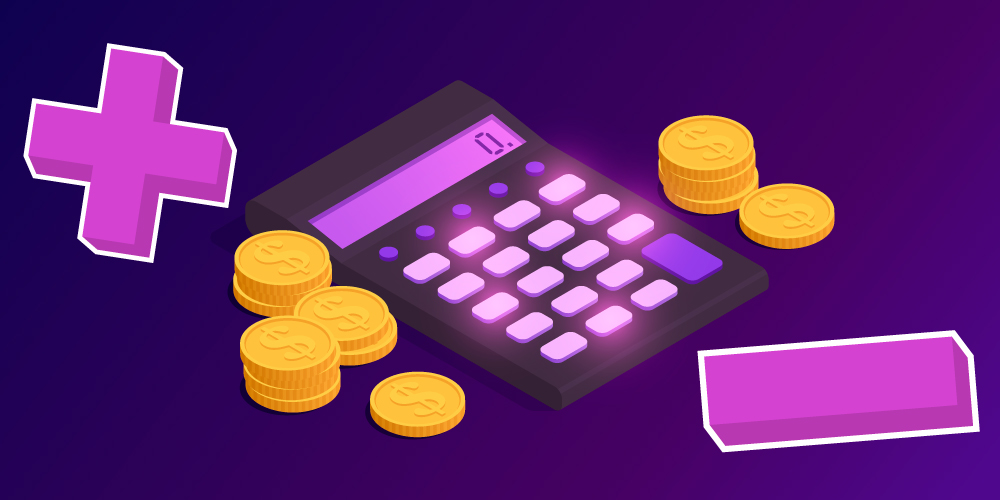If you are new to cryptocurrency, it can be a little difficult at times, but not fatal. Fortunately, we live in the age of advanced technologies, and it is enough to have access to the Internet and the desire to get basic knowledge of what Bitcoin is, and get acquainted with the basics of cryptocurrencies and blockchain. So, let’s get started.
What is Traditional Finance (TradFi)?
The term “TradFi” is an abbreviation of traditional financing and mainly refers to ordinary banks. It all started in 1694, when the Bank of England was founded, which took care of the gold of businessmen traveling around the country. It was inconvenient to carry gold with them, and people became vulnerable to attacks or robberies. It was quite reasonable for businessmen to be able to store their wealth in a safe vault while they were doing their business. They were given a receipt for gold, which allowed them to redeem precious metals when leaving the country.
In addition, the bank realized that they could profit from the amount of gold passing through their vaults. If the businessmen do not return for some time to claim their gold, the bank lends their gold in exchange for the interest rate on their deposit. Since this was a form of passive income for businessmen, it was logical for them to agree that the bank was doing this.
Over time, it became easier for businessmen to exchange with receipts for their gold than with gold itself. The paper distributed by the bank allowed the recipient to demand the amount of gold specified in the receipt. This was the beginning of a paper currency backed by gold, distributed in proportion to the amount of gold held by the government. However, history has repeatedly shown that this financial infrastructure leads to greed and deception, reducing the value of the national currency. This happens when the amount of money printed exceeds the amount of gold stored.
Why Money Changed Forever in 1971
When many countries realized that this was about the US dollar, they began to demand their gold back. Unable to fulfill these requirements, in 1971, President Nixon, as is known, refused to link the US dollar to gold.
The debt ceiling was removed, and the government could print as much money as it wanted, each time devaluing the currency. Debts, of course, need to be repaid, and this can only be done with the help of inflationary and tax measures. Therefore, the average person pays more for their goods with paper money, which continues to cost less every day.
Pros and Cons of Traditional Finance (TradFi)

Positive:
- Most people use traditional finance (TradFi), as it is currently the largest and most well-known financial infrastructure.
- TradFi has developed slowly over the decades and has a documented history.
Minuses:1
- The funds in your account are borrowed, your bank balance is, in fact, an IOU from the bank.
- Unnecessarily expensive transactions.
- Slow transaction time.
- Inflationary currencies.
- Banks can set negative interest rates, that is, customers begin to pay the bank for storing their funds.
- To send large transactions, an agreed “Know Your Customer” (KYC) documentation is required.
What is CeFi?
Centralized Finance (CeFi) usually refers to financial applications that bridge the gap between traditional finance (TradFi) and modern financial applications. Moreover, centralized financing tends to have a centralized governing body that controls any funds.
CeFi is a generic term that applies to centralized crypto exchanges and custodians, although it can be argued that other payment providers and FinTech applications also fall into this category.
Often, CeFi applications offer the storage of funds in a familiar, easy-to-use application. There are many similarities between the latest innovations in payment technologies. For example, both PayPal and Coinbase can act as CeFi, since they both offer fiat gateways for payment services along with cryptocurrency storage services.
What is especially important is that when it comes to centralized crypto exchanges and services such as Coinbase or Binance, users do not need to care about their own initial phrases and private keys. This eliminates some of the risks inherent in self-storage in cryptography and DeFi, but increases them from the possibility of hacking the exchange.
Usually, when a person enters the crypto space for the first time, he usually does it through a centralized exchange (CEX). CEX provides fiat platforms that simplify the purchase, trading and storage of cryptocurrency.
CeFi applications usually require users to fully pass the procedures (KYC) and anti-money laundering (AML) processes. This means providing personal information that directly links the account to a specific user.
CeFi is trying to bridge the gap between decentralized finance (DeFi) and traditional finance (TradFi). Thus, most CEX have a high level of regulation.
Pros and cons of CeFi

Positive:
- The emergency gateway.
- Easy to use.
- There is no risk of losing your private keys.
- Strong regulation.
- Great for attracting new users.
- Access to a wide range of crypto assets.
- Lower trading commissions for small transactions.
- Reputable CEX usually conduct a thorough due diligence before listing a coin, which is encouraging for investors.
- Acceptance by the wider financial community.
Minuses:1
- A single point of failure. In case of loss of the CEO or the key holder, the funds may be blocked and the withdrawal of funds suspended without prior notice.
- Users do not physically own their crypto assets (neither your keys, nor your coins!).
- The business has investors who need to be pleased.
- Some CEX exchanges make a mark-up on transactions, which means that you pay a little more than the market price.
- Many CEX are subject to increasing scrutiny by regulators.
What is DeFi?
DeFi, short for decentralized finance, is the latest step in the financial technology revolution. DeFi works on the basis of blockchain technology and, in fact, works in a global network of nodes. These nodes can mathematically verify transactions and write them to the block chain.
Since 2015, with the advent of Ethereum, developers have been able to create decentralized applications using smart contracts on top of blockchains. In 2020, we saw an unprecedented increase in the total cost of DeFi. From about $690 million in January to $16 billion by the end of the year. Today, this figure is about $70 billion. The pandemic contributed to this, and people realized the need to fully control their condition.
Since decentralized applications (dApps) are built on the basis of blockchains, there is no single point of failure, no control by a third party or an intermediary. Moreover, this means that users of decentralized platforms will need to have access to their funds. At the same time, many DeFi applications now have their own wallet created in a decentralized application (DApp). Often, storing the platform’s own token in the DApp wallet gives users the right to receive bonus rewards or benefits.
DeFi applies to all decentralized aspects of finance. From the DeFi tokens themselves to borrowings and loans, staking, flash loans and stablecoins. Even in the modern world, about one in three people does not have access to banking services. In addition, about two-thirds of this group have access to smartphones and the Internet. This means that millions and millions of people will have access to financial instruments from their portable devices for the first time. DeFi can help struggling economies and protect people from inflation in their local currency.
DeFi has come a long way in a very short period of time. During 2020, we have witnessed the emergence of new applications, profit generation, stablecoins, decentralized exchanges (DEX) and trading platforms.
Pros and cons of DeFi

Positive:
- Resistance to censorship and prohibition of access to financial services.
- Faster operations without borders 24/7/365.
- Cheaper transactions than TradFi.
- Stablecoins serve as a hedge against the depreciation of the local currency.
- High productivity.
- A young industry – many opportunities.
- Less regulatory control than CeFi or Traditional Finance (TradFi).
Minuses:1
- It can be difficult.
- Responsibility for your own private keys.
- Higher risk.
- There is no customer service.
- The lack of regulation can be a deterrent and hinder adoption.
- A relatively high fee for Ethereum gas.
CeFi vs. DeFi and TradFi
The world of finance, money and currency has seen many epochs and iterations. Similarly, the methods of financial interaction of people have changed from trading shells, rice and animal skins, to precious metals. Fast forward a few hundred years, and we have moved on to gold receipts and fractional reserve banking. Soon after, the fiat currency takes precedence as the dollar loses its gold support. Then the Internet appears.
The Internet has changed a lot, from how we interact with each other, to how we learn and how we develop. The financial industry is no exception. The Internet has revolutionized finance and, most importantly, allowed cryptocurrency to be born.
Some people call cryptocurrency the “Internet of Money”. DeFi and other smart contract-based platforms have made it possible to use programmable money that is resistant to censorship and free from state control. Despite the comfort and familiarity with the inherited financial system, there is no doubt that crypto platforms are beginning to win the hearts of tech-savvy investors from all walks of life.
Ultimately, when you choose between CeFi and DeFi applications, it all comes down to the individual. On the one hand, you can consider these applications as competing. However, it became clear that there are advantages and disadvantages, as well as the need for both CeFi and DeFi platforms and applications in this area.
Conclusion thoughts
Thus, when comparing CeFi and Defi, you can notice many parallels. For example, Coinbase has investors who want to see profits, just like the” decentralized ” exchange Uniswap. You can earn income from CeFi applications that work similarly to DeFi applications.
For many, decentralization is an ideology. Bitcoin has gained notoriety in part because it has provided an alternative to the traditional financial system. However, decentralized financing is not completely decentralized. Perhaps a more appropriate term would be “open financing”. Wrapped Bitcoin (WBTC) is the most popular Bitcoin wrapping service in DeFi. But, in the end, the WBTC, for example, is itself an intermediary.
Other main differences that need to be made are asset storage and anonymity. For example, in some jurisdictions, Coinbase will transfer your personal data to the tax inspector if you make deposits over a certain threshold. The danger of intertwining CeFi with traditional finance is that increased regulatory pressure threatens the basic philosophy of cryptocurrencies.
However, many believe that this is an important part of the mass adoption of cryptocurrency in the long term. Moreover, as blockchain is increasingly used by traditional financial institutions, these boundaries are likely to continue to blur.


